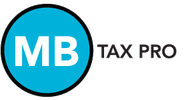Loan Forgiveness Rules Under the Paycheck Protection Program and Next Steps (Updated 6-5-2020)5/13/2020 Updated PPP Rules:
Here are six ways the law attempts to make using PPP loans easier:
Original Post: https://www.cpapracticeadvisor.com/tax-compliance/news/21137315/loan-forgiveness-under-the-paycheck-protection-program-and-next-steps The Coronavirus Aid, Relief, and Economic Security (CARES) Act established the Paycheck Protection Program (PPP) as an incentive for small businesses to retain employees during the COVID-19 pandemic. The program provides a low-interest loan to eligible small business owners, self-employed individuals, and other eligible businesses, including nonprofit organizations, and is meant to cover payroll, mortgage interest, rent, and utilities over an 24 week period. The maximum loan amount is 2.5 times the average monthly payroll from the previous calendar year and is capped at $10 million per business. The application period began on April 3, 2020, and runs through when all the funds have been committed. The loan carries a maturity of two years and a 1% interest rate.
The following expenses are included in loan forgiveness and the non-payroll items are capped at 40% of the loan proceeds:
Your clients’ allowable forgiveness is reduced for any decrease in the number of full-time equivalent (FTE) employees by comparing the average number of monthly FTE employees employed during the 24 week period after they receive your loan with either a) the average monthly FTE level for Feb. 15 through June 30, 2019, or b) Jan. 1 through Feb. 29, 2020. However, you won’t be penalized for any reduction occurring between Feb. 15, 2020, through April 26, 2020, if the reduction is eliminated by June 30, 2020.
Records your clients need to maintain: Number of employees on the payroll, employee pay rates and salary levels, payroll tax filings, and payroll costs paid in the 24 weeks after loan disbursement. Your clients will be asked to compare the average number of monthly FTE employees they employ during the 24 week period after they receive their loan with either a) the average monthly FTE level for Feb. 15 through June 30, 2019, or b) Jan. 1 through Feb. 29, 2020.
All of these expenses must be paid within 24 weeks from the date the funds hit your clients’ bank to qualify for forgiveness. At the end of those eight weeks, your client can apply for PPP loan forgiveness with their lender. It will be helpful to track this information on spreadsheets or through QuickBooks. Here are some tips if your clients use QuickBooks and its tracking features:
WHAT THE SBA SAYS ABOUT IT: https://www.sba.gov/funding-programs/loans/coronavirus-relief-options/paycheck-protection-program#section-header-7
1 Comment
|
Our Mission“At MB we are tax professionals and business consultants. We are in partnership with you, year round, to lower your tax liability to the fullest extent of the law, maximize profits, inspire growth and provide peace of mind.” Archives
November 2023
|
Call 503-595-5890
